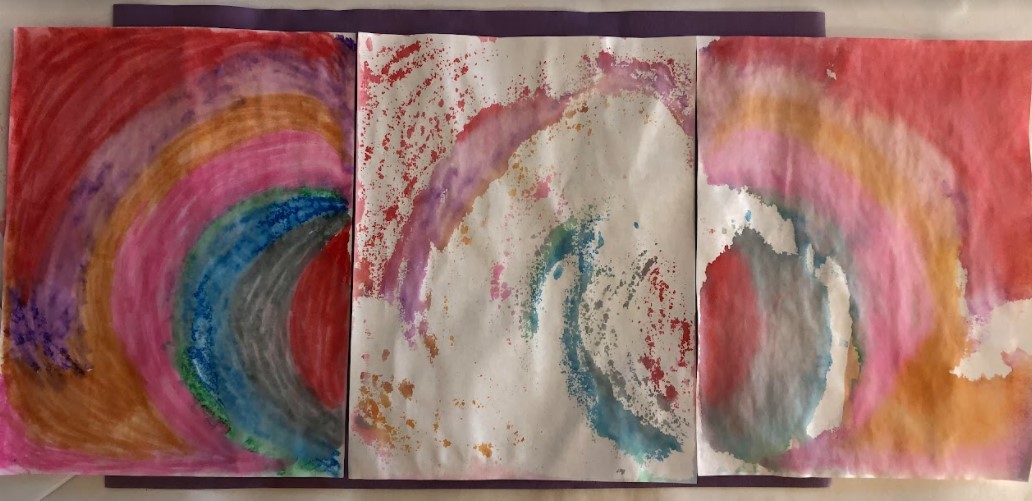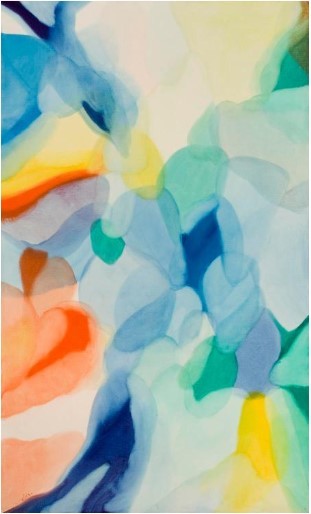Marker Watercolor Prints

Inspired by Alice Baber (1928-82)

Alice Baber, The Light in the Depths, 1975. Oil on canvas.
“Color is more important to me than some type of gesture or attacks.”
Alice Baber (1928-82) was an American abstract expressionist painter who worked in oil and watercolor. Her joyous and vibrant works were deeply influenced by the Florida Everglades, where she spent the winters of her childhood. In the 1950s, Baber experimented with watercolor paints and shifted her style to abstract expressionism, with a focus on color and form. Throughout her life, her palette and subjects drew heavily from the natural beauty she encountered. Baber was also passionate about poetry, which she infused into the metaphorical titles of her abstract works. The Light in the Depths, 1975, is a stunning example of Baber’s abstract works.
In our artful science experiment, we are going to look at how inks interact with liquids. Our inspiration is Alice Baber’s 1975 watercolor painting, The Light in the Depths. Follow NBMAA Museum Educator, Margaret, in our virtual studio.
How does it work and why do our markers bleed? First we need to know how paper and markers work. Markers are used to spread ink around and ink is a liquid solution with pigments. The pigments stay suspended in the liquid. Paper is made of thousands of fibers all squished and held together, kind of like spongy ropes. When we write on paper, the ink goes into the paper and the fibers soak it all up, like a kitchen sponge. But our fibers can only absorb so much ink before they get too wet! If too much ink is in one spot on the paper it starts to bleed. The ink moves around to find dry fibers that don’t already have ink on them. If you have ever held your marker in one spot for too long, you may have seen this happen!
This same process occurs when the paper gets wet. When we added our drops of water to our designs, the ink went on a search for a nice set of fibers to cling to. And the further the ink has to search the less pigment is in the ink, so the color gets lighter and lighter. As the paper dries, the ink evaporates leaving behind just the pigments and that is the color that you see on your finished Marker Watercolor Prints!